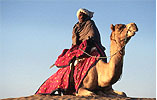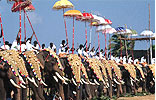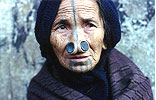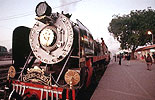Garden of Taj Mahal
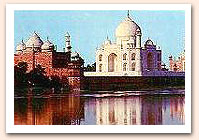 The
Persian style garden
The
Persian style garden
The lush green garden expands from the main gateway to the plinth, over which
stands the tomb. The garden in essense is based on symmetry and geometrical
measurements.
The Persian style garden has a close link with paradise, since Quran describes
paradise as a beautiful garden.
Water garden
Through the centre of the garden runs the two marble canals with fountains and
lined with cypress trees (symbolising death).
This divides the garden into four equal squares(Islam considers four to be a
holy number), evoking the image of Islamic paradise that has rivers of water,
milk, wine and honey flow. The stone paved pathways further subdivides each
flower bed into 4, making total of 16 flower beds.
The mausoleum, unlike most mughal mausoleums, stands majestically at the north
end just above the river and not at the central location. At the centre of the
garden, in the mid of the tomb and the gateway, is a raised marble lotus shaped
tank with a cusped and trefoiled border.
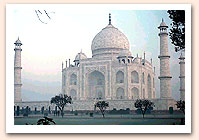
The tank has been arranged to provide a clear view of Taj in its water from
any point in the garden. The view looks amazing with the reflection of Taj amidst
the green cyprus trees .
Water devices and irrigation mechanism
Water in the canals was drawn from the river using purs, a system of drawing
water manually from river using bucket and ropes. For irrigation the water from
the overflowing canals was used.
The north-south canals had its water inlet through fountains and east-west canal
had its water inlet through an interconnection with north-south canal.
··» Taj
Mahal Agra —› Taj Mahal Location
—› Taj
Mahal Story —› History
of Taj Mahal —› Taj
Mahal Architecture —›
Garden of Taj Mahal —›
Mumtaz Mahal —›
Building of Taj Mahal —›
Actual Tomb of Taj Mahal —›
Excursions of Taj Mahal —›
How to Reach Taj Mahal —›
Mosque of Taj Mahal —›
Inside The Taj Mahal —›
Pictures of Taj Mahal










 The
Persian style garden
The
Persian style garden 
